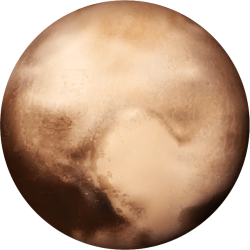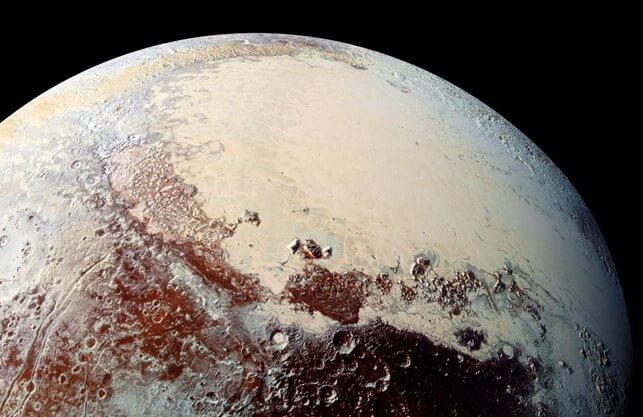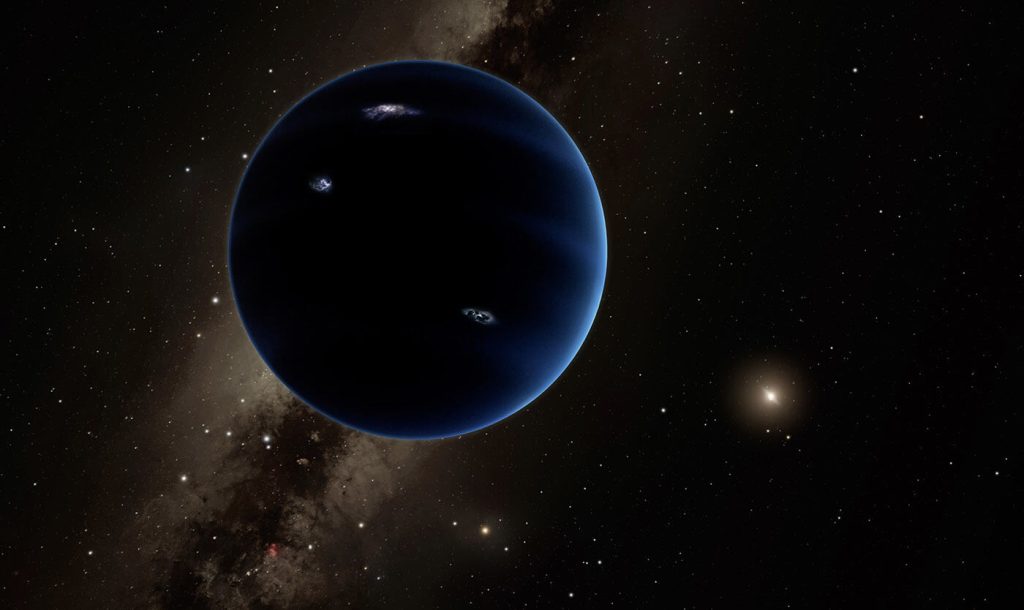Dwarf planets
Picture credits


Dwarf planets
- orbit the sun (aren’t moons),
- have enough mass to be round,
- have not yet cleared their orbits of debris.
Pluto has long been considered a planet, but has not cleared its orbit of debris. It was therefore declared a dwarf planet in 2006. Other dwarf planets are Eris and Ceres. There are many more that do not meet one or more of the requirements, and even more that we simply do not know enough about to decide whether or not they are considered dwarf planets, such as Haumea, Makemake, Quaoar, Sedna, Orcus, Gonggong, Salacia and many more.

Pluto is the most endearing object in the Solar System. On its surface is a heart-shaped area called Tombaugh Regio. It is named after the astronomer Clyde Tombaugh, who discovered Pluto in 1930. The heart-shaped region is essentially a glacier of nitrogen ice with a temperature of -230 degrees Celsius.

Pluto has a very strange orbit: it is not always further away from the Sun than Neptune. During 20 years of its 248-year orbit, Pluto is closer to the Sun than Neptune. And yet Pluto and Neptune can never collide: Their orbits are stable and are in a so-called 3:2 resonance. This means that Pluto orbits the Sun twice every three orbits of Neptune. Moreover, Pluto’s orbit is not in the so-called ecliptic, the imaginary disc in which the planets orbit the sun. Instead, its orbit is inclined by 17 degrees compared to the ecliptic.

…consists of hundreds of thousands of ice chunks. However, it is shaped more like a donut than a thin belt.
The inner edge of the Kuiper belt extends into the orbit of Neptune, the outermost planet in the Solar System. The objects in the Kuiper belt, called Trans-Neptunian Objects (TNOs), essentially still have the shape they had about 4.5 billion years ago. All TNOs in the Kuiper belt combined weigh about as much as Mars, i.e. about one ninth of Earth’s mass.

Some objects in the Kuiper belt have strange orbits. Their orbits could be explained if there were an additional planet nicknamed Planet X or Planet 9.
Planet X’s orbital period around the Sun is estimated to be between 10,000 and 20,000 years. It should have about the mass of Neptune, but be 20 times further away from the Sun. The great distance, as well as the very long time it would take to orbit the sun, makes it very difficult to detect. That is why we still have no observational proof of the existence of Planet X.

Audio guide
(available soon)
PhD students from the Institute of Physics at the University of Rostock give exciting insights into their research and explain the universe.
Quiz
Pluto is very far away from the Sun. While sunlight only takes about 8 minutes to reach Earth, how long does it take to reach Pluto?
